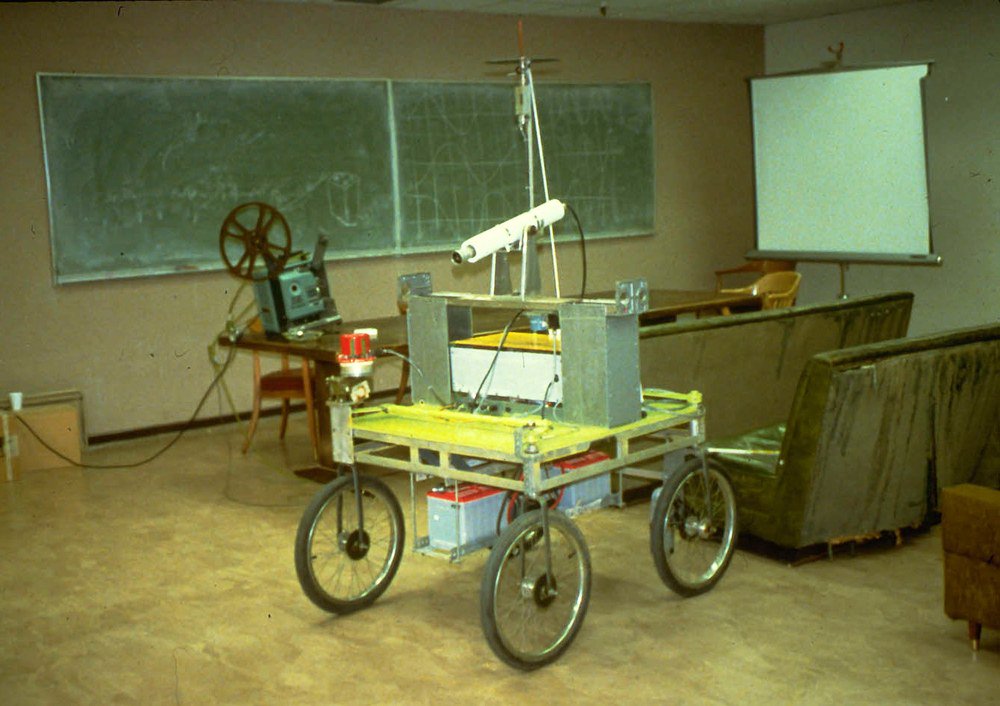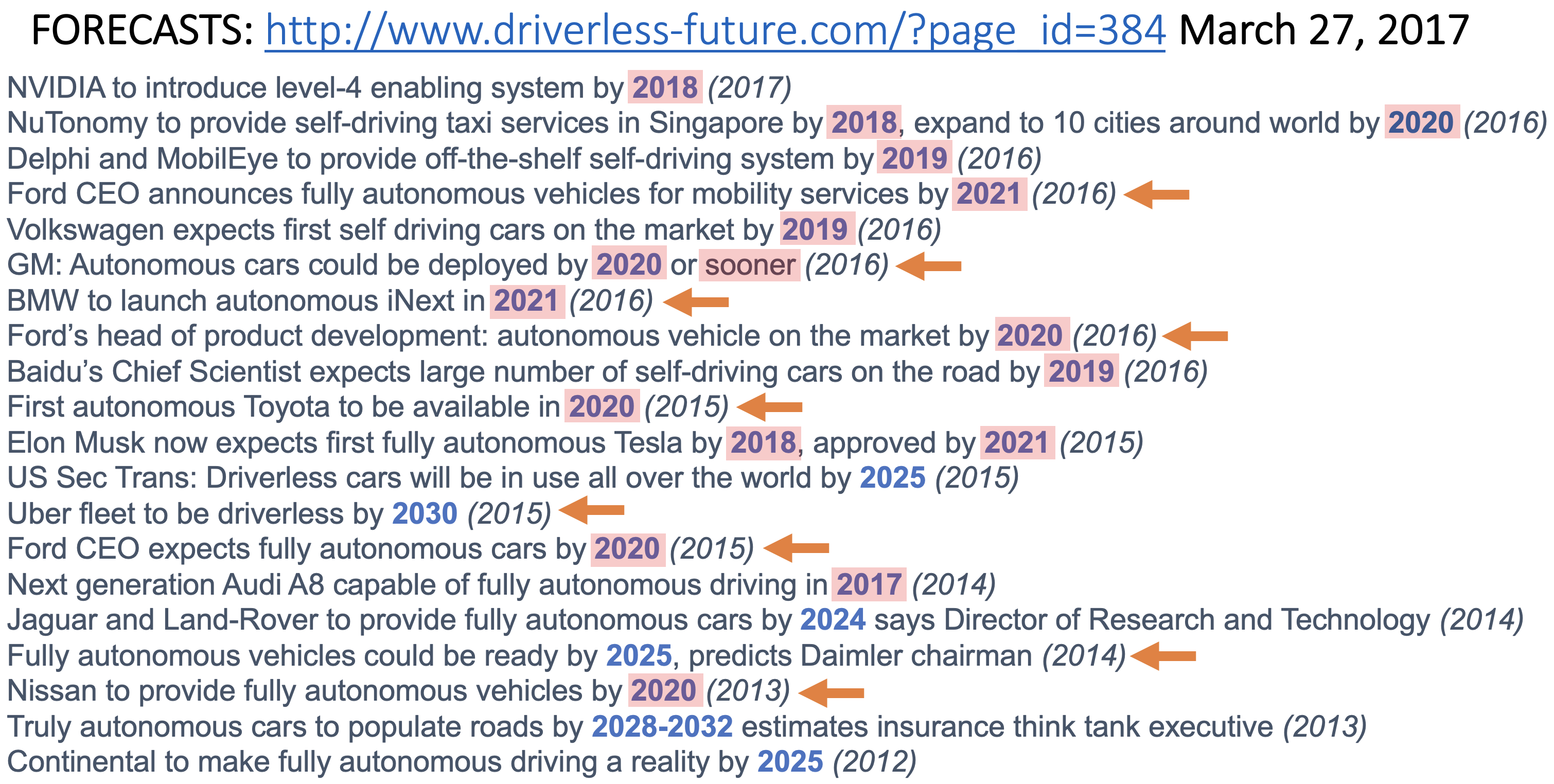My Early Experience with Self Driving Cars
Back in the summer of 1979 (forty four years ago) I was Hans Moravec’s gopher, at the Stanford AI Lab, helping test his self driving Cart for his PhD thesis. Every night that summer we would wait until midnight or so, when most people had gone home and so the single main frame computer was relatively unloaded. We would set up an indoor obstacle course for the robot, and then Hans would set it on its way. It would take nine visual images with a left to right sliding camera, process them and plan a path over the next fifteen minutes, then blind drive the first meter of that path. Four meters per hour was its averaged top speed.

We have come a long way since then.
I went on to build mobile robots at MIT, and from that work have come 50 million home-based mobile robots from a company (iRobot) that I founded with two students in 1990, along with military mobile robots, and as part of the path to mobile robots on Mars. My current startup (my sixth) is also building mobile robots, deployed in warehouses–they navigate autonomously with all computation onboard, using cameras as their only source of information, but at speeds measured in meters per second, and they are safe in the presence of humans.
My Recent Writing about Self Driving Cars
I have long been skeptical of the promises made about how soon self driving cars will fill our streets, and have written blog posts about why on this site, in terms of unexpected consequences and edge cases, both in 2017. I made predictions about AVs (along with AI and space) back on Jan 1st, 2018, and have reviewed them every January 1st since then. In my review from this year, January 1st, 2023, I included the following updated graphic from 2017.

These are public prediction from March 2017, made by industry executives, about when driverless cars would be here. The dates in parentheses were the years they were made, the dates highlighted in pink were the years they said their predictions would come to pass that have since passed, and the orange arrows indicate cases where I had seen them later walked back. As you can see they were all wrong, at least so far.
See a collection of prediction headlines from over the years just published by Gary Marcus.
I think these predictions, full of unsupported hubris, have done us a dis-service.
They reinforced the idea that we would have one-for-one replacement of human drivers with driverless cars. In all other cases where mankind has changed how we transport people and goods we have had massive changes in infrastructure. These range from agrarian to empire and Roman roads (still the outline of most major road routes across Europe), wharves in ports, inland canals, railroad tracks, paved roadways, freeways, airports, and world-wide air traffic control.
The tech enthusiasts, used to large scale deployment of software rather than physical objects, assumed that the world would stay the same, and instead we would just have driverless vehicles amongst human driven vehicles. This assumption was the source of my two critiques in 2017.
I have also noted that autonomous trains are still not very widely deployed, and where they are they have different infrastructure than human driven trains, including completely separate tracks. I have ridden them in many airports and out in and under cities in Toulouse and Tokyo, but they are not widespread. In the US the only significant self-driving trains outside of airports are to the west of Honolulu in Oahu, still not quite making it into the downtown area.
The dis-service of self driving predictions is that for the last dozen years we stopped talking about how to instrument our roads to make autonomous vehicles safe. I think we could have had self driving cars much more quickly if we had made offboard changes to our infrastructure, rather than imagining that everything would be done onboard.
RIDING IN AUTONOMOUS VEHICLES TODAY
I took my first ride in a self driving car on public roads back in April 2012, in a Google vehicle. That project later became Waymo.
In May 2022 I took three rides in a Cruise vehicle on the streets of San Francisco and blogged about it here.
I now regularly (more than once a week) ride in Cruise vehicles in San Francisco and have tweeted about it.
I often don’t report on individual rides as they happen without incident. I have reported about particular rides, that I or others have taken, when I think that the vehicles have done something for which a human driver would somehow be sanctioned if they had done the same thing. That sanction level might be other drivers or pedestrians expressing censure, legal officials directing them to do something different, or issuance of a legal citation.
My next blog post will be about my experiences in self driving cars, summarized. Spoiler alert: in my last ride, just two days ago, I first experienced real fear, where for half a second I thought I might be involved in an extremely bad accident. The type of fear where you feel a jolt in your heart, and your body readies itself for fight or flight.


